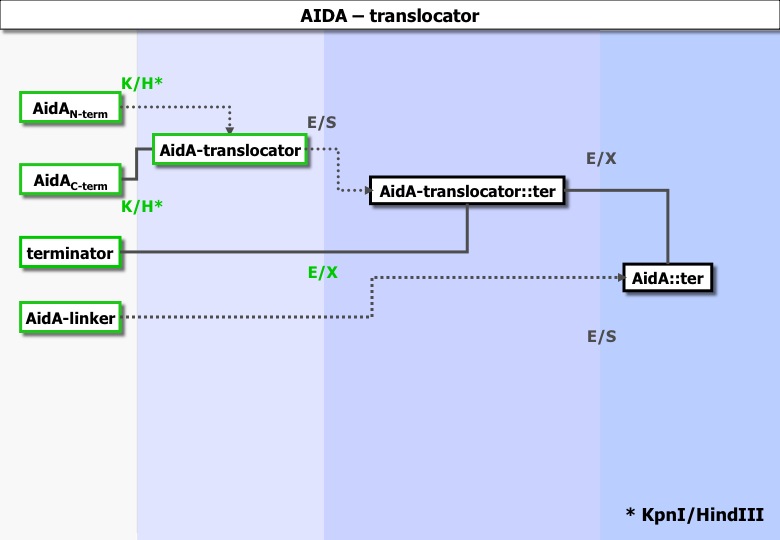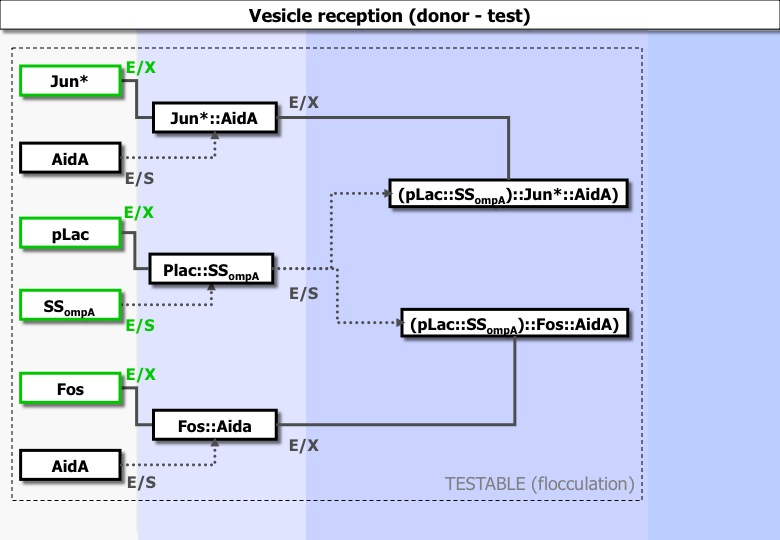Team:Paris/Transduction testing fusion
From 2009.igem.org
iGEM > Paris > Reception > Testing > Fusion
Fusion
Fusion : the construction required for the fusion of the vesicles that contain the message.
G3P , OmpAL , Jun, Fos , and AIDA protein.
Time required : A lOT !!!!!
Experiments ran :
| row 1 | row 2 | row 3 |
| PCR :
| PCR : | PCR :
|
| Verification on gel :
ok | Verification on gel :
ok | Verification on gel :
ok |
| Purification on gel :
ok | Purification on gel :
ok | Purification on gel :
ok
|
| digestion:
| digestion: | digestion: |
| verification digestion:
ok | verification digestion:
ok | verification digestion:
ok
|
| ligation:
| ligation: | ligation:
|
| PCR colo :
ok | PCR colo :
ok | PCR colo :
ok
|
| miniprep:
clone : | miniprep:
clone : | miniprep:
clone :
|
| sequencing :
ok | sequencing :
ok | sequencing :
ok |
G3P
Bien que non réalisé, nous avions prévus de faire ses manipulations afin de vérifier que la G3P ets bien exprimer à la surface bactériène et que cela induisse la fusion memebranaire.
- Surface expression of G3P
Surface expression of G3P could be seen with antibodies.
Culture of bacteria expressing OmpA-linker-G3P construction on a membrane. Adding antibodies anti-G3P. Revelation should shows whether G3P is expressed at the surface of bacteria.
- Floculation test
"Fusion" could be approached by a flocculation test.
Two separate bacterial population growth on media. A population (F-) expressing the OmpA-linker_G3P construction and a population (F +) which express sexual pilus (by expression of the episome F).
 "
"

